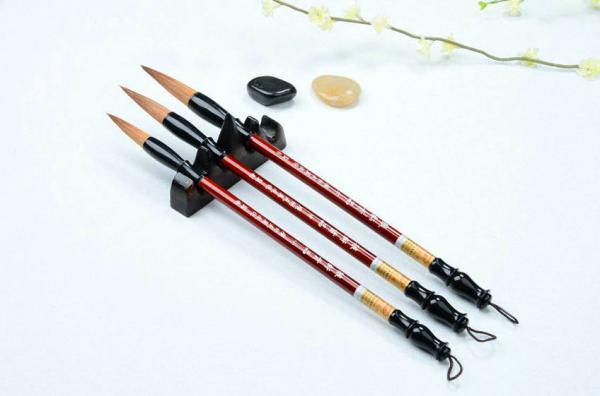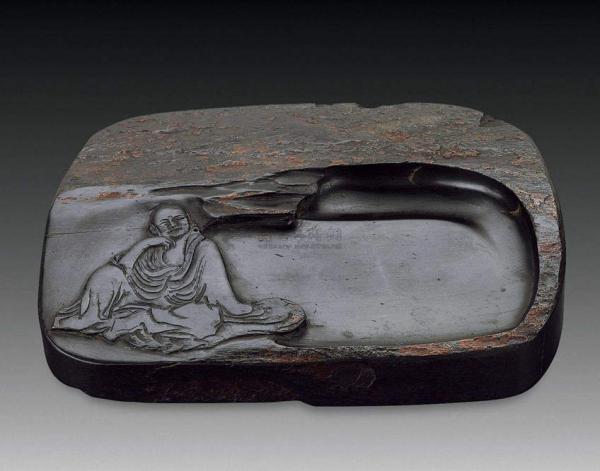The Four Treasures of the Study
Four Treasures of the Study, also known as Four Jewels of the Study or Four Friends of the Study, are different expressions of the four essential implements in Chinese Calligraphy: The brush (笔), ink (墨), paper (纸), and inkstone (砚). The term was first created by the literati during the period of the Southern and Northern Dynasties (420-589AD). Four Treasures of the Study, also known as Four Jewels of the Study or Four Friends of the Study, are different expressions of the four essential implements in Chinese Calligraphy: The brush (笔), ink (墨), paper (纸), and inkstone (砚). The term was first created by the literati during the period of the Southern and Northern Dynasties (420-589AD).
In a broad sense, Four Treasures of the Study just refer to the four writing tools of all types, while in a narrow sense, they refer to the specific devices from certain areas in the country. In different dynasties, the four treasures that the scholars valued might come from different parts of the country as their qualities were thought to be better than the rest of the places. For example, during Southern Tang Dynasty (937-975AD), the Zhuge Brush from Xuancheng, Li Tinggui’s ink from Huizhou, Chengxintang’s Paper from Huizhou, and Wuyuan Dragon Tail inkstone from Huizhou, all coming from the current Anhui Province, were fanatically pursued by then officials and scholars. But after Song Dynasty, the Four treasures of the study were changed to Xuan brush (宣笔), Hui ink (徽墨), Xuan paper (宣纸) and She inkstone (歙砚)/Tao inkstone (洮砚)/Duan inkstone (端砚). After Yuan Dynasty, Xuan brush was gradually replaced by Hu brush (湖笔) from Huzhou of Zhejiang. In the ancient time, the literati were very proud to have the 4 treasures in their studies due to their good reputations and high quality.
The ink brush
The ink brush is the most ancient of the Four Treasures, with the fact that the oldest brush found so far dates back to the Han dynasty (202 BC–220 AD). Old legends say it was invented by a military general of Qin State called Meng Tian during the Warring States Period (475-221BC). According to the archeological discoveries, writing brushes existed much earlier than the time when Meng Tian lived. On the oracle bones from Shang Dynasty (1600-1046BC), the red and black marks were left by writing brushes, which means the writing brush was invented in that period or earlier. Meng Tian is actually an improver of ink brushes.
The body of the brush are usually made from bamboo, or special materials like silver, gold, jade, ivory or sandalwood. The head of the ink brush can be made from animal hair or feathers, such as white goat hair, black rabbit hair, yellow weasel hair, or a combination of these. Each type of hair has a different rigidity and ink capacity; each type of ink brush has a different shape and size, thus results in different appearance of the handwriting. Scholars can choose a certain type of ink brush under a specific circumstance according to their preference.
Since the Ming Dynasty (1368-1644AD), Hubi (湖笔, Hu Brush) from Shanlian Town of Huzhou, Zhenjiang Province, has been recognized as the top quality brush in China.

Ink
Ink is a liquid used to color a surface. The first inks in China used for writing in the history were made from naturally occurring minerals in a liquid form. Archeologists found the ink marks left on the oracle bones in Shang Dynasty (1600-1046BC). In order to be preserved easily and convenient to carry, ink came in a solid form later, either as a stick or cake. The ink blocks are believed to be invented in Eastern Han Dynasty (25-220AD) which was made from soot and binders (glue).
To produce liquid ink from an inkstick, we need to slowly grind it mingled with water on the hard surface of an inkstone until the right consistency is achieved. Some better quality ink also mixes with powdered spices and herbs, or add aroma to make nice smell. They are often dedicatedly decorated with poems, patterns, or calligraphy, which makes them highly collectable. As the time goes by, the cheaper and bottled ink liquid can be found easily nowadays and provide more convenience.
Currently, the high quality inksticks are still produced in She County of Huangshan City, Anhui Province.
Paper
The paper was one of the four great inventions of ancient China. Calligraphy and painting requires a special type of paper known as Xuan Paper, which is different from the paper we use today. This particular form is soft, fine-textured, moth resistant, has a high tensile strength with long service life. Paper type includes unprocessed, half-processed or processed. The processing dominantly determines the paper quality: unprocessed papers are absorbent and malleable, as processed papers are more resistant to absorption and are stiffer.
Nowadays Jing County of Anhui Province is widely considered to produce the best Xuan Paper in this country, which has been praised as “the King of Paper” and “Longevity Paper”
Inkstone
An inkstone is a ware for grinding and containment of ink. Add a small amount of water, and grind the end of the inkstick to produce ink on the flat surface of the inkstone. An inkstone is often designed with a water-holding cavity and water reservoir. The water on the other side of the water-holding cavity flows into the flat surface in time and become an ink reservoir as the ink is used.

According to the archeological finds, the original inkstone was a flat stone with a pestle, on which the ink powder or pigments can be grinded into liquid with water. After inksticks were invented, pestles were no longer in use and disappeared. The flat stones were gradually made into a shallow container of liquid ink. In Han Dynasty, other materials are also used to make the ink container like pottery, lacquer and copper besides the stone.
At the beginning, inkstone was merely worked out for practical use. With the rise of appreciation of beauty, it has been made of various sizes and often displays a delicacy of carving. A good inkstone can be passed down generation after generation as a real treasure.
Nowadays, the Four most famous inkstones in China are Hongsi Inkstone (红丝砚) of Qingzhou, Shandong Province; Duan Inkstone (端砚) of Zhaoqing, Guangdong Province; She Inkstone (歙砚) of Huangshan, Anhui Province and Tao Inkstone (洮砚) of Zhuoni, Gansu Province.
Related Reading